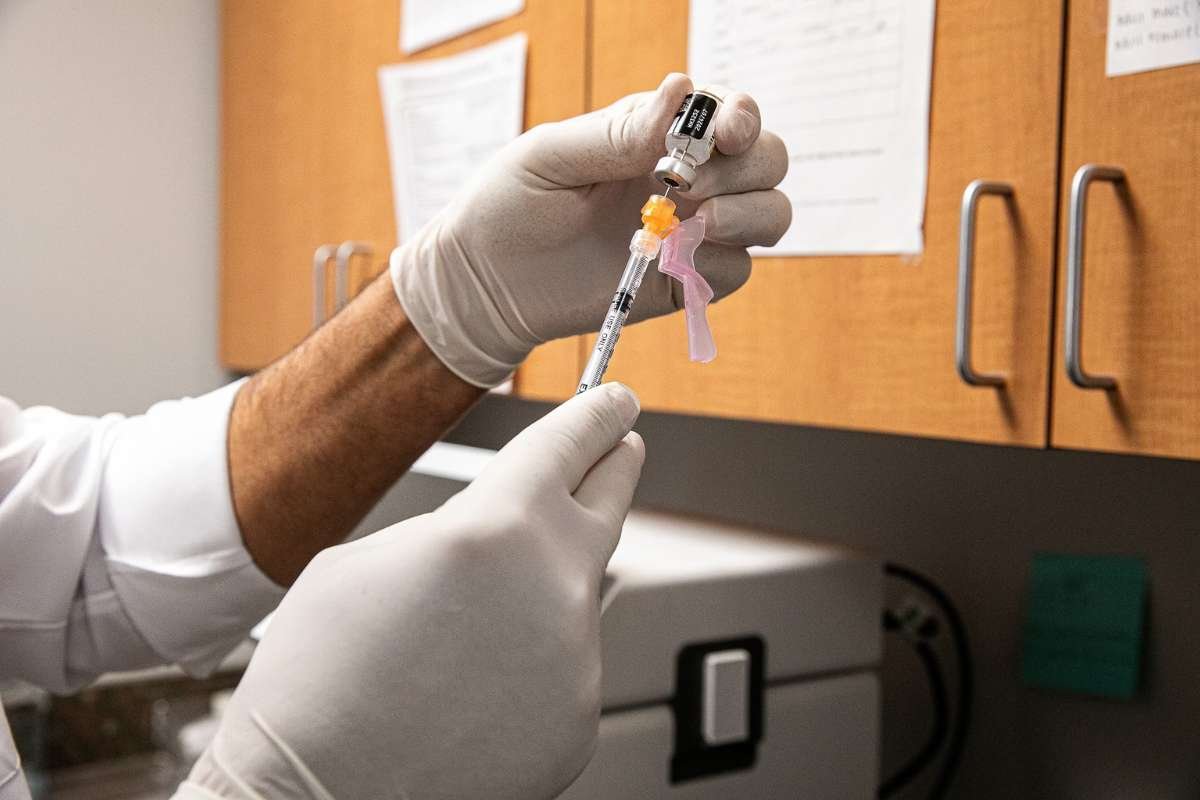Have you ever encountered a section labeled GMO foods while grocery shopping? You might notice a difference in the size of fruits and vegetables in the GMO section, which can lead to confusion. So, which ones do you choose? There is a high possibility that you are consuming foods from GMO crops. Even some fruits and veggies, like potatoes and papaya, can be GMOs.
GMO foods (genetically modified organisms) have always been a significant topic of discussion in health and agriculture. They are subjective. Scientists create GMOs by altering DNA and incorporating genes from other organisms through genetic engineering. This process is commonly undertaken to enhance flavor, increase vitamin content, and ensure resilience in harsh conditions. The rapid increase in global population is making food supply a major challenge. GMO crops are likely to play a crucial role in such harsh conditions. However, there have been concerns about possible risks.
This blog breaks down what GMO foods are, why they’re used, and how to spot them. Learn the facts about their safety, benefits, and impact on food today
What are your thoughts on this? This article will discuss what GMO foods are and a dissection of the pros and cons.
What Are GMO Foods?
GMO stands for Genetically Modified Organism. In the context of our food, this refers to plants or animals whose genetic material has been altered using biotechnology to exhibit specific traits.
Traditional crossbreeding is a stretched-out process, and can take generations to achieve the desired characteristics. Genetic engineering allows for precise and rapid modifications. For instance, scientists can introduce a gene from one organism into another to enhance nutritional content, improve resistance to pests, or increase tolerance to environmental stresses. This technology aims to address challenges in agriculture and food production, leading to more nutritious food sources.
Common Examples of GMO Foods

You might be surprised to learn that many everyday foods have genetically modified counterparts. The following examples explain how genetic modification can address specific agricultural challenges and improve food quality.
Some of the most prevalent GMO crops include:
- Corn: Engineered to resist pests and tolerate herbicides, GMO corn is widely used in food products and animal feed.
- Soybeans: Modified for herbicide tolerance, GMO soybeans are common in processed foods and oils.
- Canola: Genetically altered to withstand herbicides, canola plants produce oil used in cooking and food processing.
- Papaya: The Rainbow Papaya was developed to resist the Papaya Ringspot Virus, saving the Hawaiian papaya industry from devastation.
- Apples: Certain varieties have been modified to resist browning when cut or bruised, enhancing their visual appeal and reducing food waste.
Benefits of GMO Foods

The development and adoption of GMO foods have introduced several advantages in agriculture and food production:
1. Enhanced Crop Yields
GMO crops are often engineered to be more adaptable to pests, diseases, and environmental conditions, leading to higher agricultural productivity. This increased yield helps meet the food demands of a growing global population.
2. Reduced Need for Chemical Pesticides
Certain GMO crops are designed to be pest-resistant, decreasing the reliance on chemical pesticides. For example, BT crops produce a protein toxic to specific insects, reducing the need for external pesticide applications.
3. Improved Nutritional Content
Genetic modification can improve the nutritional profile of foods. A notable example is Golden Rice, engineered to contain higher levels of vitamin A, aiming to combat deficiencies in regions where rice is a staple food.
4. Environmental Sustainability
By increasing yield and reducing the need for chemical inputs, GMO crops can contribute to more sustainable farming practices. They can help conserve natural resources and reduce the environmental footprint of agriculture.
5. Longer Shelf Life
Some GMO foods are modified to have a longer shelf life, reducing food spoilage and waste. This benefit is particularly important in improving food security and reducing the environmental impact associated with food waste.
How to Identify GMO Foods and the Difference from Regular Foods?

Now that you know what GMO foods are, you might be wondering: How do I know if I’m eating them? It’s a great question, especially if you’re trying to be more aware of what’s on your plate.
1. Look for Labels
Some food manufacturers label products as non-GMO, meaning they do not contain genetically modified ingredients. If you’re trying to avoid GMO food products, these labels are a helpful guide. In the United States, foods that contain genetically modified ingredients are now required to disclose that information under the National Bioengineered Food Disclosure Standard. You may see phrases like:
- Contains bioengineered ingredients
- Made with genetic engineering
- A QR code or symbol with a leaf (indicating bioengineered content)
2. Check Organic Products
If a food is certified organic in the U.S., it’s not allowed to contain GMO ingredients. So, buying organic is one way to avoid GMO foods entirely.
3. Understand the Most Common GMO Ingredients
Knowing what ingredients are most likely genetically modified helps you identify them even without a label. The following ingredients are often used in processed foods like snack bars, cereals, and soft drinks.
Common GMO ingredients include:
- Corn syrup
- Soy lecithin
- Canola oil
- Cottonseed oil
- Sugar (from sugar beets)
Addressing Safety and Regulation
The safety of GMO foods has been a topic of extensive research and regulatory scrutiny. Major health organizations, including the World Health Organization (WHO) and the U.S. Food and Drug Administration (FDA), have evaluated GMO foods for safety. These assessments involve evaluating potential allergenicity, toxicity, and nutritional changes to ensure that GMO products are safe for consumption.
- World Health Organization (WHO) states that GMO foods currently available on the international market have passed safety assessments and are not likely to present risks to human health
- The U.S. Food and Drug Administration (FDA) ensures that foods from genetically engineered plants meet the same safety standards as foods derived from traditionally bred plants.
Consumer Perspectives and Labeling
Public perception of GMO foods varies, with some consumers expressing concerns about their safety and environmental impact. In response, many countries have implemented labeling regulations to inform consumers about the presence of GMO ingredients in food products. In the United States, the National Bioengineered Food Disclosure Standard requires food manufacturers to disclose the use of bioengineered ingredients, providing transparency and allowing consumers to make informed choices.
Are GMOs Safe?
This is one of the most common concerns, and it’s totally valid to ask. Fortunately, organizations like the World Health Organization (WHO) and the FDA have done extensive research and say that GMO foods currently on the market are safe to eat. They are rigorously tested for potential allergens, toxins, and any changes in nutritional content. In fact, many GMO crops undergo more testing than conventional ones before reaching grocery shelves. Still, some people choose to avoid them out of personal preference or environmental concern, and that’s okay, too. The good part is that you have choices, and now, you understand what’s behind those choices.
Conclusion
GMO foods might sound like something from the apocalypse. But they’re actually a product of modern science trying to solve real issues, like feeding more people, protecting crops, and reducing food waste. From disease-resistant papayas to corn that keeps pests away naturally, GMO foods are already part of the meals we eat every day. Next time you’re at the grocery store, you’ll know how to spot them, what sets them apart, and what they bring to the table. And that kind of knowledge is always a good ingredient in any diet.
Also read: The Happy Diet: Here are the 7 types of foods that could boost your serotonin levels









